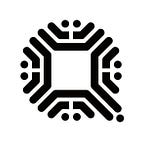Qtum Circulating Supply Updated
The Qtum project sold 51% of the maximum supply during the March 2017 crowdsale. The remaining 49% is distributed as per the “Economy Whitepaper Draft”, which was released in February 2017. In order to understand this document, you have to know the difference between the parties involved, and how tokens are managed. There is the Qtum Community, Qtum Team, Angel Backers, and Qtum Foundation.
The “Economy Whitepaper Draft” was a joint effort made by PricewaterhouseCoopers and the Qtum Foundation. It has not been modified in any way since release, and can be found here:
A lot of the information needs to be updated, so expect a new version of this to be released this year. We will not host the old version on the website once updated, so be sure to download this copy for future reference.
Understanding the 49%
All of this information is in the “Economy Whitepaper Draft”, but that document is almost 40 pages long. There are 2 pages that discuss the distribution (pages 21–24), and a few charts that break this down.
Chart 1: This Breaks Down Token Distribution, But Does Not Provide a Timeline.
Chart 2: We begin to explain that after 4 years, tokens will move from the Qtum Foundation, to other entities.
The above chart illustrates that over time, tokens will become spendable, as the Foundation distributes them according to the Economy Whitepaper. The table below (chart 3) breaks down how we plan to achieve this:
A breakdown of the total supply of 100 million tokens, not counting tokens that were staked, is as such:
51 Million were sold during the crowdsale to the community.
8 million were distributed to the Angel Backers. This happened directly after the Qtum ERC20 was released, shortly after the crowdsale.
12 million tokens were transferred from the Foundation to the Team, which are to be distributed to team members over the next 4+ years.
9 million tokens reserved for marketing purposes. 25% of these were spent in year 1, bringing us to year 2, where 25% became unlocked and are now spendable. This represents 4.5 million tokens (2.25 million + 2.25 million). There are 4.5 million tokens that are still locked, to become spendable in years 3 and 4. Next year we will ask to increase the circulating supply by 2.25 million tokens as we unlock year 3.
20 million tokens allocated for business development and DAPP support. This allocation is used to encourage entities to build on Qtum. Similar to the marketing fund, it is split over four years. We have already distributed tokens to promising projects that funding for early-stage operations. It would violate the NDAs we’ve signed with these projects, as well as violate their privacy (they should announce this, not us) in order to tell you every project we’ve funded and how many coins we have given them.
In total, our circulating supply should be presented as such:
51M (crowdsale) + 8M (angel investor) + 12M (distributed to Qtum Team over 4+ years) + 4.5M (2 years marketing) + 13M (2 years business development, 7million year 1, 6 million year 2) + Approximately 1 million Qtum / year (PoS coins from staking. The difficulty is set to try and achieve 1% inflation annually) = 88.5~ million Qtum.
When we enter year 3 (March 2019), there will be an additional 2.25 million tokens from the marketing fund, along with 4 million from the business development fund that come into circulation. In 2020, the remaining 3 million from the business development fund, along with the last 2.25 million from the marketing fund will become spendable.
Please keep in mind that the Qtum Foundation deals only in our own Token. Entities that approach us for assistance or collaboration do not receive Bitcoin or Ether from our crowdsale fund, nor does the Foundation ever transfer tokens to an exchange to be ‘dumped’. Tokens allocated to staff or Angel Backers are transferred directly to a Qtum deposit address provided by the respective recipient.
